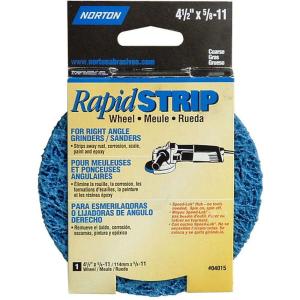Welding Techniques - Arc Welding and Mig Welding techniques on the same parts
" Stick vs Mig ...smokey smokey? "
( ... having trouble viewing this video? click here to view it at Welding-TV.com. )
A TIG finger works for Migging Too
I lucked up and got a gravy job the other day so I took the chance to shoot video on welding techniques using both mig and stick.
The job was as simple as pie. Welding 2" round stock into 1" thick A36 hot rolled steel.
About 8 plates , 2 pins each, welded both sides for a total of 32 welds.
These parts were going to be dipped in a black oxide coating tank when done so the hot rolled mill scale needed to be removed so the black oxide coating could do its magic.
That is why the parts are clean and shiny in the video.
Its not often, you get to weld parts that are already cleaned, and tack welded.
Hey that brings me to a good tip....
I discovered a wheel for a grinder that removes hot rolled mill scale without loading up.
If you have ever used a sanding disc to clean hot rolled down to shiny bright metal, you know how quickly the sanding disc quits sanding . That oxidized mill scale is really hard to remove.
A grinding wheel works but sometimes the finish is just too rough.
The wheel I discovered, or rather that my machinist buddy discovered. is made by Norton. Its one of the "Rapid Strip" line.
Its blue and coarse and looks a bit like scotch brite except that its much tougher.
The part number on the packaging is
OKI-NRT 07660704015 T27 4.5X5/8-11T Rapid Strip Coarse
Just google it and you will find what I am talking about.
(this just in on July 1, 2011...one viewer emailed to say his experience with the norton wheels were very disappointing on hot rolled steel. They worked great for me on my application but I guess not all hot rolled steel is the same. So keep that in mind. if you are going to try them out, you might want to only buy one first to see how it works )
I am including a photo of the package so you can make sure to get the same thing if you need to. The Rapid Strip wheel worked great for removing the hot rolled coating and lasted much longer than sanding discs....and left a really smooth finish too.

OK, back to this weeks video and differences in mig/arc welding techniques
Since I already had a stick welder hooked up with some 1/8" 7018 stick electrode on hand, I decided to weld a few welds with stick before swapping over to mig. It gives me more to write about and makes for a more interesting video. I think.
To me , this was definitely a mig job.
... but its good to keep in practice with the old stick ... besides any mig is likely to be out of commission mid job...then what? you just stick weld, that's what.
133 amps was the setting on the machine but it seemed more like about 120 amps. At times, I thought about 5-10 more amps would have made the weld a little smoother but I also think that was mostly because it was hard to maintain a really good rod angle.
In the video, I try to demonstrate a way of holding the rod in the electrode holder that works good for going around round parts like this. It works for me, it might work for you to so you might give it a go.
I only stick welded a few welds before moving on to mig.
The mig nozzle was sure packed with spatter but since I did this job at someone elses shop, I made sure to bring a leatherman tool with me. A leatherman tool is a welders best friend. Not only is it good for snipping wire but can be used like mig pliers for cleaning a nozzle.
Once the nozzle was cleaned and adjusted for stickout, I made several dry runs with the mig gun to find a way to reach all the way around the part without stopping.
Honestly, I think it was easier to make it all the way around with the stick because mig is faster and its hard to change hand positions fast enough to keep up the travel speed.
Almost the same welding techniques can be used for a job like this no matter whether stick or mig.
Very small cursive e's will work on both processes.
A 7018 also works fine with just a smooth drag, but for me, some slight motion like small cursive e's hides my shakiness.
The cursive e welding technique has always worked for me for mig welding in most situations. I use it all the time.
exit welding techniques and See the Tig Finger
















